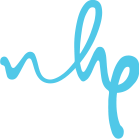News
Our articles provide you with the most recent industry related news and information, including local and international health days.

Play like a child again
Playing has many benefits for adults – great for stress relief and stimulates creativity.

Music: More than just soul-medicine!
Research indicates that music is capable of reducing levels of the stress hormone cortisol.

A guideline to your babies reaction to sounds
A 4 month old recognises a familiar voice and turns toward the voice.

A guideline to your babies hearing and language development
Toddlers enjoy playing peek-a-boo and pat-a-cake.
Forms
Select and download all application, registration and request forms as well as information on NHP’s designated service providers, tariffs and travel insurance.

Information and Services
BMI Calculator
Chronic Lifestyle Diseases
Babyline
Benefit suggestions
These life stages aim to illustrate the thoughtful consideration given to the evolving healthcare needs of individuals at different points in their lives. By aligning medical aid benefits with these life stages, we ensure that our members receive targeted and effective healthcare support throughout their journey.


Young Adults
18-30 years young
- Comprehensive preventive care coverage for routine check-ups and vaccinations.
- Access to virtual health consultations for convenient healthcare support.
- Basic dental and vision coverage for early preventive measures.
- Wellness programmes and resources to promote a healthy lifestyle.
Suggested options:


Establishing Families
31-45 years young
- Enhanced maternity benefits including prenatal and postnatal care.
- Pediatric coverage for vaccinations, well-child visits, and common childhood illnesses.
- Expanded family planning and fertility treatment options.
- Comprehensive coverage for routine and preventive care.
Suggested options:


Mid-Life Professionals
46-60 years young
- Comprehensive coverage for chronic conditions management.
- Specialised screenings for age-related health concerns.
- Access to specialists for managing mid-life health challenges.
- Mental health support and counseling services.
Suggested options:


Seniors
61+ years young
- Back and neck rehabilitation
- Comprehensive coverage for Chronic conditions management
- Specialised screenings for age-related health concerns
- Access to Specialists for managing mid-life health challeneges








